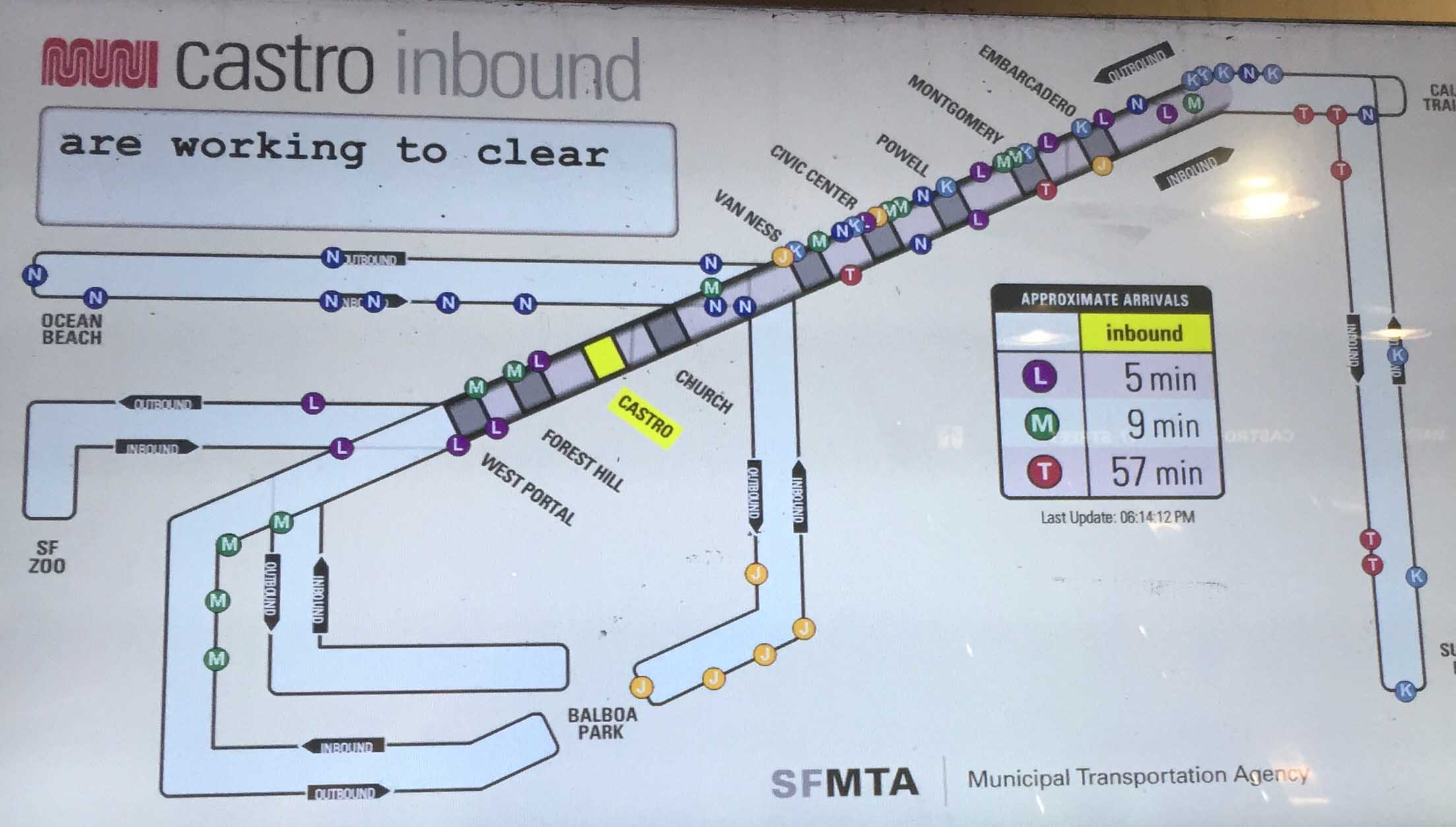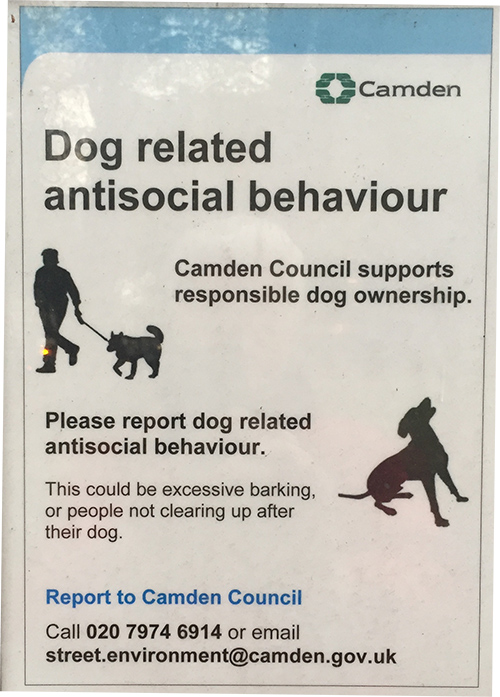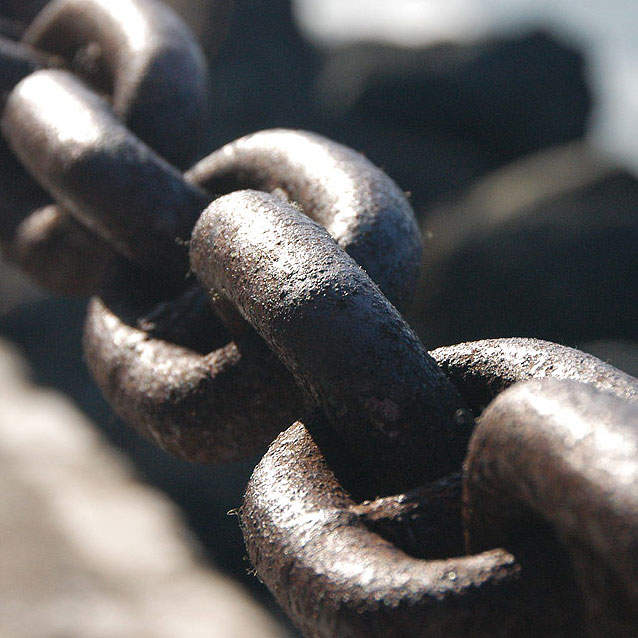 The San Francisco Bay Area comprises many cities, two of which, Oakland and San Jose, are larger than San Francisco itself. San Francisco has a rapid-transit system whose central backbone is a half dozen routes on which light-rail-vehicles [LRVs] ply the streets and a single-track (in each direction) subway under Market Street. The subway is called the MUNI Metro. [Read more…]
The San Francisco Bay Area comprises many cities, two of which, Oakland and San Jose, are larger than San Francisco itself. San Francisco has a rapid-transit system whose central backbone is a half dozen routes on which light-rail-vehicles [LRVs] ply the streets and a single-track (in each direction) subway under Market Street. The subway is called the MUNI Metro. [Read more…]
Cubism in Public
 Cubism in modern life?
Cubism in modern life?Dog-related Antisocial Behavior
 Couldn’t resist this sign, which is posted in the public park near Euston Station in London. I’ll leave it to readers to make their own comments.
Couldn’t resist this sign, which is posted in the public park near Euston Station in London. I’ll leave it to readers to make their own comments.
London is full of parks both public and private. Yes, private in that they’re fenced off and you need a key to access. Neighbors might have a key — others do not. And parks that have been there hundreds of years.
In San Francisco we’re not used to this concept of private parks. Frequently one encounters brass plates in the sidewalk stating “Right to pass… by permission of owner…” and in some cities, like New York, owners of private property that is open for trespass will close off their right-of-way once a year, just to enforce their right of ownership. [Read more…]
After Net Neutrality
 Under the principles of net neutrality, Internet Service Providers [ISPs] are like common carriers, carrying all bits equally, but with neutrality nullified, what’s the likely outcome?
Under the principles of net neutrality, Internet Service Providers [ISPs] are like common carriers, carrying all bits equally, but with neutrality nullified, what’s the likely outcome?
The Federal Communications Commission [FCC] in the United States has voted to nullify the common carrier status of ISPs, and thus to kill net neutrality, but of course other nations may not do so and I think there are customer actions that could make it difficult for carriers to run roughshod over this principle. The FCC calls their own action “Restoring Internet Freedom” and I, along with millions of others, contend that it’s only restoring the freedom for carriers to differentiate and prioritize, and charge as they see fit, making it more difficult for us common folks in the long run.
Net Neutrality — The Issue is Bandwidth
 The Internet is a network of networks. An Inter-Net. (And keep in mind that the Internet is way more than “The Web” which is just one service running within this gigantic infrastructure.)
The Internet is a network of networks. An Inter-Net. (And keep in mind that the Internet is way more than “The Web” which is just one service running within this gigantic infrastructure.)
The Role of the ISP — Individuals and companies who have their own networks interconnect those nets by plugging in through Internet Service Providers [ISPs]. And in turn, each ISP is linked to “upstream” network providers, and through those to a group of very large carriers who form what’s called the Internet backbone. It’s not just a two-dimensional backbone, but itself is a distributed network of very-high-speed carriers with real-world physical interconnection points. There are many possible routes from an end user to another end user through this backbone. The big providers do what is called peering at these interchange points, where they are all peers, handing off traffic from one to the other with the flow based, of course, on how much traffic is going in any given direction, but otherwise “equally” in terms of priority. [Read more…]
- « Previous Page
- 1
- …
- 3
- 4
- 5
- 6
- 7
- …
- 90
- Next Page »